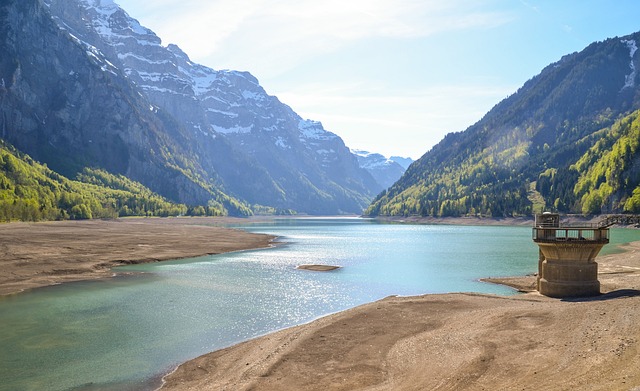Extreme weather events, such as hurricanes, floods, droughts, and heatwaves, are becoming increasingly frequent and intense, exacting a heavy toll on human lives, infrastructure, and ecosystems. While extreme weather has always been a part of Earth’s climate system, scientific evidence overwhelmingly points to human-induced climate change as a significant driver of this alarming trend, amplifying the frequency, intensity, and duration of these devastating events.
The Science Behind the Connection
The Earth’s climate system is complex and interconnected, with even small changes in temperature having far-reaching consequences. The increase in greenhouse gases, primarily carbon dioxide from burning fossil fuels, acts like a blanket around the Earth, trapping more heat in the atmosphere and leading to a warming planet. This warming effect, known as the greenhouse effect, has profound implications for extreme weather events.
Heatwaves and Droughts
As global temperatures rise, heatwaves become more frequent, intense, and longer-lasting. Warmer air can hold more moisture, leading to increased evaporation from soil and water bodies, resulting in drier conditions and exacerbating droughts. The combination of extreme heat and drought can have devastating impacts on agriculture, water resources, and human health. For example, prolonged droughts can lead to crop failures, water shortages, and wildfires, impacting livelihoods, food security, and increasing the risk of heat-related illnesses and mortality.
Intense Storms and Hurricanes
Climate change is altering atmospheric patterns, leading to more intense storms and hurricanes. Warmer ocean temperatures provide more energy for these storms, leading to higher wind speeds, increased rainfall, and greater destructive potential. The link between climate change and hurricane intensity is particularly evident in the Atlantic Ocean, where warmer sea surface temperatures have been linked to more powerful hurricanes in recent decades. These storms bring with them not only strong winds but also heavy rainfall, leading to widespread flooding, storm surges, and coastal erosion, causing significant damage to infrastructure, property, and displacing communities.
Floods
The warming atmosphere can hold more moisture, leading to more intense rainfall events. This increased precipitation, coupled with changes in land use and urbanization, can overwhelm drainage systems and lead to more frequent and severe flooding. Coastal areas are particularly vulnerable to flooding due to sea-level rise, which is exacerbating the impacts of storm surges and coastal erosion. As sea levels rise, coastal communities face an increased risk of flooding, erosion, and saltwater intrusion, threatening infrastructure, homes, and livelihoods.
Recent Examples of Climate-Related Extreme Weather
The devastating impacts of climate change-fueled extreme weather events are evident across the globe, serving as stark reminders of the urgent need for action. Record-breaking heatwaves have scorched Europe and North America, leading to widespread wildfires, heat-related illnesses, and strain on energy grids. The 2021 Pacific Northwest heatwave, for example, caused hundreds of deaths and sparked massive wildfires, highlighting the growing vulnerability of even typically temperate regions to extreme heat.
Devastating floods in Asia have displaced millions of people, destroyed crops, and caused billions of dollars in damage. The 2022 Pakistan floods, among the deadliest in recent history, submerged one-third of the country, affecting over 33 million people and causing widespread damage to infrastructure, agriculture, and livelihoods. Powerful hurricanes have battered coastal regions in the Atlantic and Pacific, leaving a trail of destruction and displacement in their wake. The 2017 Atlantic hurricane season, which saw powerful storms like Harvey, Irma, and Maria, caused unprecedented damage and displacement, highlighting the vulnerability of coastal communities to the impacts of climate change.
These events serve as stark reminders of the escalating risks posed by a warming world. As climate change continues unabated, extreme weather events are projected to become more frequent and severe, posing significant challenges to human societies and ecosystems worldwide. The increasing frequency and intensity of these events highlight the interconnectedness of global weather patterns and the far-reaching consequences of a changing climate.
Conclusion
The link between climate change and extreme weather is undeniable. The scientific evidence is clear: human activities, primarily the burning of fossil fuels, are altering the Earth’s climate system, leading to more frequent, intense, and devastating extreme weather events. The impacts of these events are felt globally, from scorching heatwaves and prolonged droughts to devastating floods and powerful hurricanes, threatening human lives, infrastructure, ecosystems, and global stability.
Equally important is investing in adaptation measures to build resilience to the impacts that are already occurring and will continue to intensify in the coming decades. This includes investing in more resilient infrastructure, improving early warning systems for extreme weather events, implementing sustainable land management practices to reduce the risk of floods and droughts, and developing heat action plans to protect vulnerable populations from extreme heat.
Building more resilient communities requires a multifaceted approach, involving collaboration between governments, businesses, communities, and individuals. Investing in climate-resilient infrastructure, such as flood defenses, drought-resistant crops, and early warning systems, can help mitigate the impacts of extreme weather events. Promoting sustainable land management practices, such as reforestation and water conservation, can help reduce the risk of floods and droughts.
International cooperation and coordinated action are essential to address this global challenge effectively. Sharing knowledge, technology, and resources can help countries, particularly those most vulnerable to climate change, adapt to its impacts and build resilience. By working together, we can create a safer, more sustainable future for all. Failure to act decisively and swiftly will have catastrophic consequences for present and future generations, jeopardizing the health, well-being, and prosperity of humanity.




